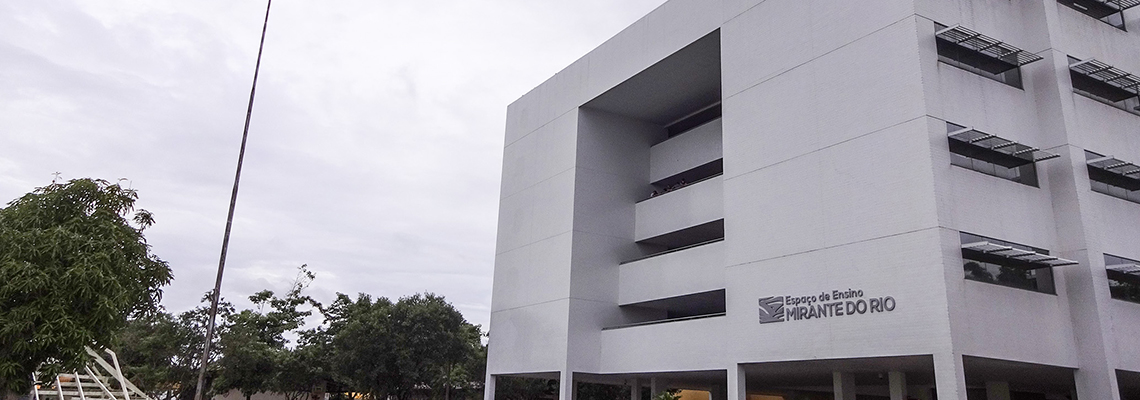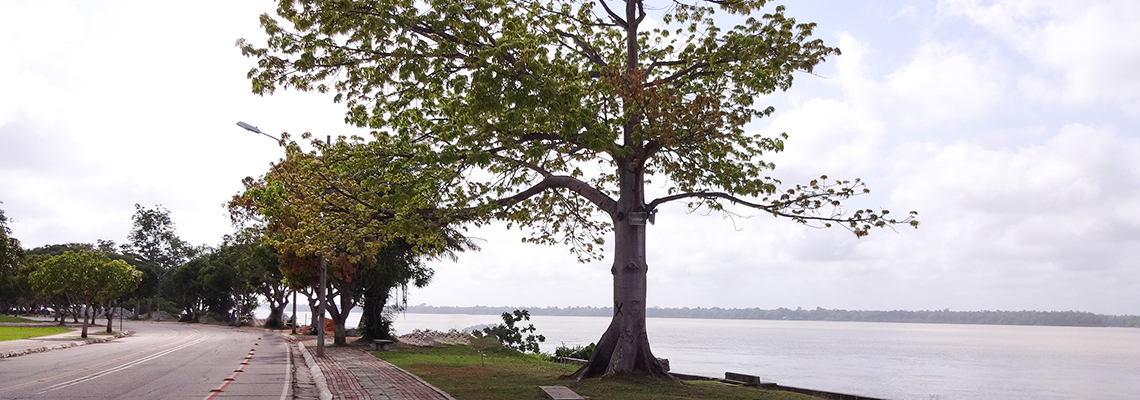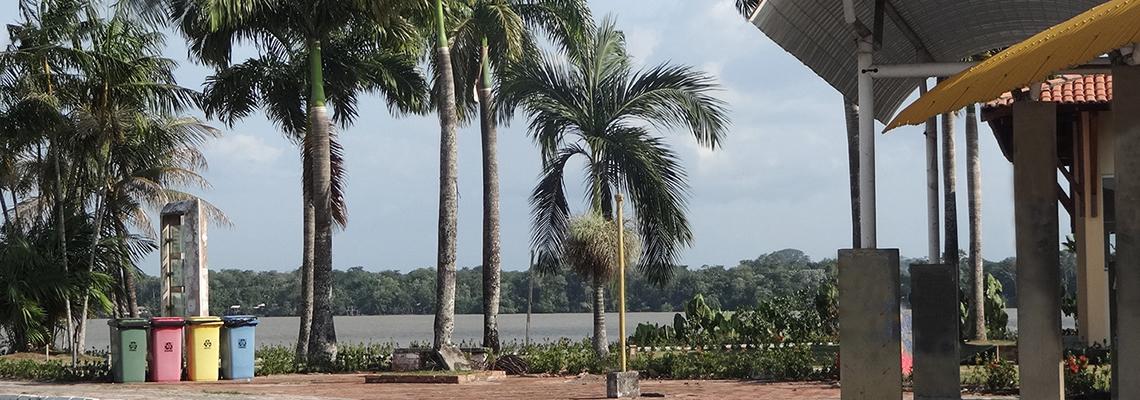Course Content
Basic Concepts in Pharmacology and Biochemistry (mandatory)
This course aims to be a leveler providing the following conceptual themes: i) routes of administration and absorption of drugs, ii) distribution of drugs, iii) biomolecules (structure and function), iv) receptors and mechanisms of cell transduction, v) bases for the interpretation of drug effects (concentration-effect curves, EC50, pD2, Emax), vi) enzymes as biological catalysts (classification, structure and cofactors), vii) enzymatic kinetics, viii) mechanisms of enzymatic action and activity control, ix) cell enzymes and replacement, x) metabolism and drug excretion, xi) pharmacokinetic models, xii) drug interactions.
Bibliography
David L. Nelson, Michael M. Cox. Princípios de bioquímica de Lehninger. 7ª ed. São Paulo: Editora Artmed, 2018.
Jeremy M. Berg, Lubert Stryer, John L. Tymoczko. Bioquímica. 7ª edição. Rio de Janeiro: Guanabara Koogan, 2014.
Zhang Y, Park KY , Suazo KF , Distefano MD. Recent progress in enzymatic protein labelling techniques and their applications. Chem Soc Rev. 47(24):9106-9136, 2018. doi: 10.1039/c8cs00537k
Shemsi AM, Khanday FA, Qurashi A, Khalil A, Guerriero G, Siddiqui KS. Site-directed chemically-modified magnetic enzymes: fabrication, improvements, biotechnological applications and future prospects. Biotechnol Adv. S0734-9750(19)30013-8, 2019. doi: 10.1016/j.biotechadv.2019.02.002
Laurence L. Brunton, Randa Hilal-Dandan, Björn C. Knollmann. Goodman and Gilman's The Pharmacological Basis of Therapeutics, 13th ed., Ed. McGraw-Hill, NY, USA, 2018.
Bertram G Katzung. Basic & Clinical Pharmacology, 14th ed, Ed. McGraw-Hill, NY, USA, 2018.
James Ritter, Rod Flower, Graeme Henderson, Yoon Kong Loke, David MacEwan, Humphrey Rang. Rang & Dale's Pharmacology, 9th ed., Ed. Elsevier, NY, USA, 2019.
Recent scientific articles of international journals.
Ethics and Integrity in Research (mandatory)
The social context of science. Ethics in animal research. Ethics in human research. Project presentation to Ethics Committees. Ethical aspects of experimental techniques and data processing. Special case: the treatment of digital data. Values in science. Conflicts of interest. Published and unpublished information. Credit assignment and criteria of literary authorship. Plagiarism. Respond to violations of ethical principles.
Bibliography
Koepsell, D. Scientific Integrity and Research Ethics: An Approach from the Ethos of Science, Ed. Springer Nature, Switzerland, 2017.
Guillem D, Diniz D. O quê é ética em pesquisa? Ed. Brasiliense, SP, 2017.
National Academies of Sciences, Engineering, and Medicine. Fostering integrity in research. https://www.nap.edu/catalog/21896/fostering-integrity-in-research
Fang FC, Steen RG, Casadevall A. Misconduct accounts for the majority of retracted scientific publications. Proc Natl Acad Sci USA 2012; 109:17028-33.
Gorman DM, Elkins AD, Lawley M. A Systems Approach to Understanding and Improving Research Integrity. Sci Eng Ethics. 2017 doi: 10.1007/s11948-017-9986-z.
Volpato G. Ciência além da visibilidade. Ed. Best Writing, São Paulo, SP, 2017
Higher Education Methodology and Foundations of Teaching Practice (mandatory)
The course aims to discuss the theoretical and methodological foundations of planning, didactics and evaluation in the teaching-learning process in higher education. It also seeks to present and discuss conceptions and theories such as the inseparability between teaching-research extension, research as an educational principle, problem-based learning and foundations of pluri-multi-inter-transdisciplinarity. For this, the topics to be discussed follow: 1) Knowledge of teaching in higher education, 2) The importance of planning in the teaching-learning process, 3) Planning levels, 4) Theoretical elements of planning, 5 ) Preparation of lesson plans, 6) Unit plans and teaching plans, 7) Principles and processes of teaching in Higher Education, 8) Teaching-learning processes in adults, 9) Didactic methodologies in university classes, 10) Conceptions on evaluation (Traditional, Technical, Quantitative / Classification and Qualitative), 11) The inseparability between planning and evaluation, 12) Types of evaluation (diagnostic, formative and summative), 13) The error in evaluation, 14) Mediating evaluation and evaluation emancipatory, 15) Fundamentals of distance education and its applicability in higher education, and 16) Problem-based learning. Interdisciplinarity, multidisciplinarity, multidisciplinarity, transdisciplinarity.
Bibliography
HOFFMANN, J. O jogo do contrário em avaliação. 9. ed. Porto Alegre: Mediação, 2014.
OLIVIERI, M.F.A; OLIVIERI, M.A; BALLABEN, C.R. Didática e prática do ensino superior. São Paulo: Globus, 2013.
GIL, A.N. Metodologia do ensino superior. 4. ed. São Paulo: Atlas, 2013.
GAETA, C; MASETTO, M.T. O professor iniciante no ensino superior: aprender, atuar e inovar. São Paulo: Senac São Paulo, 2013.
MORAN, J.M; MASETTO, M.T; BEHRENS, M.A. Novas tecnologias e mediações pedagógicas. 21. ed. Campinas, São Paulo: Papirus, 2013.
MASETTO, M.T. Docência na universidade. 11. ed. Campinas, SP: Papirus, 2012
Research Planning and Biostatistics (only mandatory for the Master course)
Definition and characteristics of the Scientific Method. Survey, analysis and use of literature. Research questions. The dialogue between Kuhn and Popper and the generation of innovative questions. How to choose the best research question. Hypotheses and variables. Improving goals according to the types of research, types of variables and hypotheses. Experimental scheme drawing. Interference control and sample size. Data collection. Data Distribution. Homoscedasticide / Heteroscedasticity. Descriptive statistics. Statistical methods: correlation. Multivariate correlation. Statistical methods for comparing groups. Statistical errors and power. Presentation of results and drawing of conclusions.
Bibliography
Marconi MA, Lakatos EM. Fundamentos de metodologia científica. 8. ed. São Paulo: Atlas, 2017.
Severino, AJ. Metodologia do trabalho científico. 24.ed. São Paulo: Cortez, 2016.
Volpato G. Ciência: da filosofia à publicação. Ed. Cultura Acadêmica, São Paulo, SP, 2013.
Prodanov e Freitas. Metodologia do Trabalho Científico: Métodos e Técnicas da Pesquisa e do Trabalho Acadêmico. Ed. Feevale, Novo Hamburgo, RS, 2013.
Vieira S. Introdução à Bioestatística. 5ª ed. Rio de Janeiro: Elsevier, 2016.
Vieira S. Bioestatística: tópicos avanzados. 4ª ed. Rio de Janeiro: Elsevier, 2018.
Fávero LP, Belfiore P. Análise de dados, técnicas multivariadas exploratórias. 1ª ed. Rio de Janeiro: Elsevier, 2015.
Silva LF. Epidemiologia Ambiental. 1ª. ed: Rio de Janeiro: Elsevier, 2016.
Recent scientific articles of international journals.
Writing of Scientific Articles in Pharmacology and Biochemistry (only mandatory for the PhD course)
Introduction to popular science. Types of productions. Characteristics of scientific articles. Sciences Bibliometric bases. Current trends in scientific publishing. Criteria for choosing the Scientific Journal. Planning of scientific articles. IMRD format and essay. Title characteristics. Making an effective summary. Presenting a topic correctly. Methodology: how to describe. Presentation of results in articles. Discussion: dialogue with literature. Differences between results and conclusions. Sum of Scientific Articles. Review and evaluation of scientific articles.
Bibliography
Cauchick-Miguel P.A., Campos L.M.S., Jabbour C.J.C., Jabbour A.B.L.S. Elaboração de artigos acadêmicos: estrutura, métodos e técnicas. Ed. Elsevier, RJ, 2017.
Gomes Pereira M. Artigos Científicos: como redigir, publicar e avaliar. Ed. Guanabara Koogan, RJ, 2013.
Volpato G. Dicas para redação científica, 4ª ed. Ed. Best Writing, São Paulo, SP, 2016.
Volpato G. Guia prático para redação científica. Ed. Best Writing, São Paulo, SP, 2015.
Glasman-Deal, H. Science research writing for non-native speakers of English. Ed. Imperial College Press, Convent Garden, London, 2010.
Blackwell J, Martin J. A scientific approach to scientific writing. Ed. Springer, New York, USA, 2011.
Recent scientific articles of international journals.
Clinical Biochemistry
Concepts on the study of the laboratory evaluation of the water, electrolyte and acid-base balance of the main functions of metabolism: renal, hepatic, pancreatic, dyslipidemias, cardiovascular, bone and muscular diseases and disorders. Study of hematopoiesis, physiology and pathophysiology of hemostasis and coagulation of series of erythrocytes, leukocytes and platelets, immunohematological diseases and study of the main leukemias. Study of the diagnosis of main human infections, and the diagnosis of the main pathogens that cause these infections, such as urinary tract infections, respiratory infections, bloodstream infections.
Bibliography
Marshall WJ, Lapsley M, Day AP, Ayling MR, Grandi F. Bioquímica clínica: aspectos clínicos e metabólicos. 3ª ed. Rio de Janeiro: Elsevier, 2016.
Gaw A, Murphy MJ, Srivastava R, Cowan RA, O´Reilly DSJ. Bioquímica Clínica. 5ª ed. Rio de Janeiro: Elsevier, 2015.
Marshall WJ, Bangert SK, Lapsley M. Química Clínica. 7ª ed. Rio de Janeiro: Elsevier, 2013.
Crook MA. Clinical Biochemistry and Metabolic Medicine. 8ª ed. CRC Press, 2013.
DEVLIN, Thomas M. Manual de Bioquímica com Correlações Clínicas. 7 ed. São Paulo. Editora Blucher, 2011
Recent scientific articles of international journals.
Biochemistry of Nutrition
Digestion and absorption of micronutrients and micronutrients; Regulation of intermediate metabolism (carbohydrates, lipids and proteins, with special emphasis on the regulation and fate of the constituents of the diet); You need the main nutrients, vitamins and minerals; Food and health relationship (integrated vision of the main metabolic pathways through the analysis of some specific physiological situations, for example, fasting, diabetes, exercise, pregnancy, lactation); detailed analysis of human dietary needs (energy, nitrogen, amino acids, essential fatty acids, vitamins, water, minerals, dietary fiber), including the biochemical, metabolic and physiological justifications for them; detailed presentation of the concept of "Healthy Eating" in relation to some chronic diseases, such as type II diabetes, cardiovascular diseases, metabolic syndrome, osteoporosis, obesity, neurodegenerative diseases and intestinal diseases.
Bibliography
Mahan,L.K. Krause - Alimentos, Nutrição E Dietoterapia - 14ª Ed.Elsevier. 2018.
David L. Nelson, Michael M. Cox. Princípios de bioquímica de Lehninger. 7ª ed. São Paulo: Editora Artmed, 2018.
Bender, D.A. Introduction to Nutrition and Metabolism. 5th Edition,CRC Press, 2014
Stipanuk M., Caudill, M. Biochemical, Physiological, and Molecular Aspects of Human Nutrition, 4th Edition, 2018.
Recent scientific articles of international journals.
Biochemistry of Oxidative Metabolism
Principles that guide oxidative metabolism (ROS, Fenton reaction, antioxidants endogenous, exogenous and oxidative stress); Mechanisms of oxidative damage to DNA, lipids and proteins (and repair of this damage), as well as the theory of oxidative damage in aging and the role played by reactive species in signal transduction, cell death, reproduction and other important biological events (physical exercise, menopause, cancer, among others).
Bibliography
Nelson, David L; Lehninger, Albert L; Cox, Michael M. Lehninger principles of biochemistry. New York :W.H. Freeman, 7ª ed.
Halliwell, B.; Gutteridge, John MC. Free radicals in biology and medicine. Oxford University Press, USA, 2015.
Gutteridge JMC, Halliwell B. Mini-Review: Oxidative stress, redox stress or redox success? Biochem Biophys Res Commun. 502(2):183-186, 2018. doi: 10.1016/j.bbrc.2018.05.045
Barnham KJ, Masters CL, Bush AI. Neurodegenerative diseases and oxidative stress. Nat Ver Drug Discov. 3(3):205-14, 2004.
Finkel T, Holbrook NJ. Oxidants, oxidative stress and the biology of ageing. Nature. 408(6809):239-47, 2000. DOI: 10.1038/35041687
Halliwell B. Oxidative stress and cancer: have we moved forward? Biochem J. 401(1):1-11, 2007. DOI: 10.1042/BJ20061131
Argüelles S, Guerrero-Castilla A, Cano M, Muñoz MF, Ayala A. Advantages and disadvantages of apoptosis in the aging process. Ann N Y Acad Sci. 2019. doi: 10.1111/nyas.14020
Biochemistry and Pharmacology of the Cardiovascular System
This course aims to address a general description of the control mechanisms of cardiovascular and biochemical and pharmacological functions of drugs that act on the cardiovascular system. To this end, the following topics will be reviewed: i) Biochemical and physiological bases of the cardiovascular and blood pressure regulation system, ii) Biochemical and functional bases for the use of drugs that interfere with the cardiovascular system, iii) Biochemistry of vascular smooth muscle and importance of calcium in the excitation-contraction process, iv) biochemistry and pharmacology of vascular tone and importance of endothelium, v) biochemistry and pharmacology of hemostasis and thrombosis, vi) biochemistry and pharmacology of cholesterol and lipoprotein metabolism, vii) effects of sympathomimetic and sympatholytic drugs, nitric oxide synthase inhibitors and the renin-angiotensin system under pressure and control of vascular tone, viii) biochemistry of cardiac contractility effects of pharmacological agents on the heart, ix) biochemical and pharmacological methods used in the study of cardiovascular function.
Bibliography
Cardiovascular Disease. Nature Reviews Cardiology 12.11 (2015): 627–642.
Riet, L. et al. “Hypertension: Renin-Angiotensin-Aldosterone System Alterations.” Circulation Research 116.6 (2015): 960–975.
von Lueder, Thomas G., and Henry Krum. “New Medical Therapies for Heart Failure.” Nature Reviews Cardiology (2015): 12: 730-740.
Zhao, Dong, Jing Liu, et al. “Cardiovascular Risk Assessment: A Global Perspective.” Nature Reviews Cardiology 12.5 (2015): 301–311
Cosselman, Kristen E., Ana Navas-Acien, and Joel D. Kaufman. “Environmental Factors in Cardiovascular Disease.” Nature Reviews Cardiology 12.11 (2015): 627–642
Laurence L. Brunton, Randa Hilal-Dandan, Björn C. Knollmann. Goodman and Gilman's The Pharmacological Basis of Therapeutics, 13th ed., Ed. McGraw-Hill, NY, USA, 2018.
Bertram G Katzung. Basic & Clinical Pharmacology, 14th ed, Ed. McGraw-Hill, NY, USA, 2018.
Recent scientific articles of international journals.
Biochemistry and Pharmacology of the Nervous System
Components of nervous tissue and biochemistry of neurotransmitter synthesis. Synapse types and biochemistry of nerve impulse transmission. Distribution and metabolism of neurotransmitters. The pharmacodynamics and pharmacokinetics of drugs that act on the autonomic nervous system (ANS): adrenergic and cholinergic. Clinical pharmacology of the ANS. Pharmacodynamics and pharmacokinetics of drugs that act on the central nervous system (CNS): antidepressants, antipsychotics, anticonvulsants, sedative-hypnotics and pharmacology of neurodegenerative diseases (Parkinson's, Alzheimer's, etc.). Clinical pharmacology of the CNS.
Bibliography
BAYNES, J.W. DOMINICZAK, M.H. Bioquímica Médica. 4 ed. Rio de Janeiro: Elsevier, 2015.
DEVLIN, T.M. Manual de Bioquímica com correlações clínicas. 3 ed. São Paulo: Blucher, 2011.
David L. Nelson, Michael M. Cox. Princípios de bioquímica de Lehninger. 7ª ed. São Paulo: Editora Artmed, 2018.
Laurence L. Brunton, Randa Hilal-Dandan, Björn C. Knollmann. Goodman and Gilman's The Pharmacological Basis of Therapeutics, 13th ed., Ed. McGraw-Hill, NY, USA, 2018.
Bertram G Katzung. Basic & Clinical Pharmacology, 14th ed, Ed. McGraw-Hill, NY, USA, 2018.
Recent scientific articles of international journals.
Chemical Drug Dependence
The addition of drugs of abuse has been little investigated in Brazil. This course aims to study the mechanisms related to chemical dependency, including the structures of the nervous system involved and their consequences. This discipline will also address the biochemical and pharmacological aspects of chemical dependency on the most widely used drugs of abuse with an emphasis on its molecular aspects. This course aims to develop the critical capacity for the student's understanding of the physiological mechanisms related to reinforcement and reward neurobiology, as well as pharmacological mechanisms involved in the recreational use of psychotropics and narcotics, their pathophysiological consequences, such as the mechanisms of damage, that include the following topics: i) Introduction to Chemical Dependence: structures involved and activation mechanisms of the reinforcement and reward system; ii) tolerance and dependence; iii) alcohol; iv) Opioids; v) Marijuana; vi) Amphetamines; vii) Ectasia; viii) LSD; ix) heroin; x) Crack; xi) Cocaine; xii) Tobacco; xii) Other drugs.
Bibliography
Bruton L.L., Hilal-Dandan R., Knollmann B.C. As Bases Farmacológicas da Terapêutica De Goodman e Gilman. McGraw-Hill Education, USA, 2018.
Watson R.R. e Zibadi, S. Addictive substances and neurological disease. Ed. Elsevier, London, 2017.
Koob G.F., Le Moal M. Drug abuse: hedonic homeostatic dysregulation. Science 1997;278:52–58.
Grant J.E., Potenza M.N., Weinstein A., Gorelick D.A. Am J Drug Alcohol Abuse. 2010;36(5):233-41.
Pierce RC, Fant B, Swinford-Jackson SE, Heller EA, Berrettini WH, Wimmer ME. Environmental, genetic and epigenetic contributions to cocaine addiction.Neuropsychopharmacology. 2018;43(7):1471-1480.
Kwako LE, Bickel WK, Goldman D. Addiction Biomarkers: Dimensional Approaches to Understanding Addiction. Trends Mol Med. 2018;24(2):121-128.
De Luca MA, Di Chiara G, Cadoni C, Lecca D, Orsolini L, Papanti D, Corkery J, Schifano F. Cannabis; Epidemiological, Neurobiological and Psychopathological Issues: An Update.CNS Neurol Disord Drug Targets. 2017;16(5):598-609.
Recent scientific articles of international journals.
Molecular Modulation of Variety of Therapeutic Response and Target-Therapy
Population diversity. Variability in therapeutic response / toxicity. Molecular bases of therapeutic targets. Precision medicine. Biotransformation enzymes. Transporters and therapeutic targets. Use of small inhibitory molecules and monoclonal antibodies. Population diversity in the Amazon and therapeutic response.
Bibliography
BJORKMAN, S. Prediction of cytochrome P450- mediated hepatic drug clearance in neonates, infants and children. Clin Pharmacokinet, v.45, n.1, p.1-11, 2006.
BOSCH, T.M.; MEIJERMAN, I.; BEIJNEN, J.H.; SCHELLENS, J.H.M. Genetic polymorphisms of drug-metabolising enzymes and drug transporters in the chemotherapeutic treatment of cancer. Clin Pharmacokinet, v.45, n.3, p.253-285, 2006.
BROOKES AJ. The essence of SNPs. Gene. 1999;234:177-186. 4. DAHL ML. Cytochrome p450 phenotyping/genotyping in patients receiving antipsychotics: useful aid to prescribing? Clin Pharmacokinet. 2002;41:453-470.
DAHL, M-L. Cytochrome P450. Phenotyping/Genotyping in patients receiving antipsychotics. Clin Pharmacokinet, v. 41, n. 7, p. 453-470, 2002.
DESTA, Z.; ZHAO, X.; SHIN, J-G; FLOCKHART, D.A. Clinical significance of the cytochrome P450 2C19 genetic polymorphism. Clin Pharmacokinet, v. 41, n. 12, p. 913-958, 2002.
INGELMAN-SUNDBERG, M. Polymorphism to cytochrome P450 and xenobiotic toxicity. Toxicology, v. 181-182, p. 447-452, 2002.
LINDPAINTNER K. The impact of pharmacogenetics and pharmacogenomics on drug discovery. Nat Rev Drug Discov. 2002;1:463-469.
MUKHERJEE D, TOPOL EJ. Pharmacogenomics in cardiovascular diseases. Prog Cardiovasc Dis. 2002;44:479-498.
ROWLAND, M.; TOZER, T. N. Clinical Pharmacokinetics and Pharmacodynamics: concepts and applications. 4th ed., Lippincott, Williams & Wilkins, 839 p., 2011.
SAKAEDA, T. MDR1 genotype-related pharmacokinetics: fact or fiction? Drug Metab Pharmacokinet, v.20, n.6, p.391-414, 2005.
TANAKA, E.; KURATA, N.; YASUHARA, H. How useful is the “cocktail approach” for evaluating human hepatic drug metabolizing capacity using cytochrome P450 phenotyping probes in vivo? Journal of Clinical Pharmacy and Therapeutics, v. 28, p. 157-165, 2003.
Intellectual Property and Bio-businesses
Intellectual Property in Biological and Health Sciences. Patent Fundamentals. International deals. Patenting criteria. Drafting of patents. Entrepreneurship. Business plan.
Bibliography
AUSTIN, M. Business development for the biotechnology and pharmaceutical industry. Gower: Burlington (USA), 2008.
BARBOSA, D.B. Uma Introdução à Propriedade Intelectual.; Rio de Janeiro: Lumen Iuris, 2006.
INSTITUTO DANNEMANN SIEMSEN DE ESTUDOS JURÍDICOS E TÉCNICOS. Comentários à Lei da Propriedade Industrial; Rio de Janeiro: Renovar, 2013.
JUNGMANN, D.M. Inovação e propriedade intelectual: guia para o docente. Brasilia:SENAI, 2010.
VIEIRA, M.A. Propriedade Industrial; Rio de Janeiro: Lumen Juris, 2006.
ZUCOLOTO G.F., FREITAS R.E., Propriedade intelectual e aspectos regulatórios em biotecnologia– Rio de Janeiro: Ipea, 2013.
Toxicology
General principles of toxicology. Toxic agents. Toxicokinetics and Toxicodynamics. Specific and nonspecific organ toxicity. Toxicological biochemistry. Environmental toxicology. Methods quantitative data in toxicology. Fields of application of toxicology.
Bibliography
OGA, S.; ALMEIDA CAMARGO, M. M.; OLIVEIRA BATISTUZZO, J.A. Fundamentos de Toxicologia, 4ª. ed. São Paulo, Ed Atheneu, 2014.
MOREAU, R. L. M; SIQUEIRA, M. E. P. B. de. Toxicologia analítica. Rio de Janeiro: Guanabara Koogan, 2ªEd. 2016.
Klaassen C. D.; Watkins III J. B. Fundamentos em Toxicologia de Cassaret e Doull. Porto Alegre: ArtMed, 2a. Ed tradução). 2012.
HAYES, W. A. Principles and Methods of Toxicology. Philadelphia: Taylor & Francis, 2001.
KLAASSEN, C.D. Casarret & Doull’s. Toxicology – The basis science of poisons. 7 ed. New York: McGrawHill, 2008.
Recent scientific articles of international journals.
Methodologies for the Preparation of Systematic Review and Meta-analysis
Concepts of systematic review. Formulation of a research question involving clinical status and / or animal studies. Registry of systematic reviews. Strategies for systematic search of primary studies. Quality scales for the evaluation of the methodology quality of scientific studies (Qualifiers and GRADE). Quantitative analysis of primary studies by meta-analysis. Interpretation and discussion of the results found in the Systematic Review.
Bibliography
Cochrane Handbook for Systematic Reviews of Interventions. Pai M, McCulloch M, Gorman JD, Pai N, Enanoria W, Kennedy G, et al. Systematic reviews and meta-analyses: An illustrated, step-by-step guide. The National Medical Journal of India 2004; 17(2): 86-95.
Egger, M., Davey Smith, G., Altman, D G. (2003) Systematic Reviews in Health Care: metaanalysis in context. London: BMJ. Série do BMJ em pdf (site)
Petitti DB. Meta-Analysis, Decision Analysis, and Cost-Effectiveness Analysis. Oxford University Press, New York, 2000. 5 - Sutton AJ, Abrams KR, Jones DR, Sheldon TA, Song F. Methods for Meta-Analysis in Medical Research. John Wiley and Sons. West Sussex, England, 2000.
Fowkes FG, Fulton PM. Critical appraisal of published research: introductory guidelines. BMJ. 1991;302(6785):1136-40.
Guyatt GH, Oxman AD, Vist GE, Kunz R, Falck-Ytter Y, Alonso-Coello P, Schünemann HJ; GRADE Working Group. GRADE: an emerging consensus on rating quality of evidence and strength of recommendations. BMJ. 2008 Apr 26;336(7650):924-6. doi: 10.1136/bmj.39489.470347.AD.
Liberati A, Altman Dg, Tetzlaff J, Mulrow C, Gøtzsche Pc, Ioannidis Jp, Clarke M, Devereaux Pj, Kleijnen J, Moher D. The PRISMA statement for reporting systematic reviews and meta-analyses of studies that evaluate healthcare interventions: explanation and elaboration. BMJ. 2009 Jul 21;339:b2700. doi: 10.1136/bmj.b2700.
Sterne Ja, Hernán Ma, Reeves Bc, Savovi J, Berkman Nd, Viswanathan M, Henry D, Altman Dg, Ansari Mt, Boutron I, Carpenter Jr, Chan Aw, Churchill R, Deeks Jj, Hróbjartsson A, Kirkham J, Jüni P, Loke Yk, Pigott Td, Ramsay Cr, Regidor D, Rothstein Hr, Sandhu L, Santaguida Pl, Schünemann Hj, Shea B, Shrier I, Tugwell P, Turner L, Valentine Jc, Waddington H, Waters E,
Wells Ga, Whiting Pf, Higgins Jp. ROBINS-I: a tool for assessing risk of bias in non-randomised studies of interventions. BMJ. 2016 Oct 12;355:i4919. doi: 10.1136/bmj.i4919
Advanced Topics in Pharmacology and Biochemistry
Current limits of biochemical-pharmacological knowledge (ex Toxicology, Clinical Biochemistry, Oxidative stress, clinical pharmacology, national pharmaceutical policy and related areas) based on recent publications on literature reviews and specific articles published in highly prestigious journals, theoretical-practical courses, seminars and discussions with foreign reference professors on content considered strategic by the Program (for example, advanced analysis methodologies or research topics that want to be encouraged within the framework of the Program).
Bibliography
David L. Nelson, Michael M. Cox. Princípios de bioquímica de Lehninger. 7ª ed. São Paulo: Editora Artmed, 2018.
Jeremy M. Berg, Lubert Stryer, John L. Tymoczko. Bioquímica. 7ª edição. Rio de Janeiro: Guanabara Koogan, 2014.
Zhang Y, Park KY , Suazo KF , Distefano MD. Recent progress in enzymatic protein labelling techniques and their applications. Chem Soc Rev. 47(24):9106-9136, 2018. doi: 10.1039/c8cs00537k
Shemsi AM, Khanday FA, Qurashi A, Khalil A, Guerriero G, Siddiqui KS. Site-directed chemically-modified magnetic enzymes: fabrication, improvements, biotechnological applications and future prospects. Biotechnol Adv. S0734-9750(19)30013-8, 2019. doi: 10.1016/j.biotechadv.2019.02.002
Laurence L. Brunton, Randa Hilal-Dandan, Björn C. Knollmann. Goodman and Gilman's The Pharmacological Basis of Therapeutics, 13th ed., Ed. McGraw-Hill, NY, USA, 2018.
Bertram G Katzung. Basic & Clinical Pharmacology, 14th ed, Ed. McGraw-Hill, NY, USA, 2018.
James Ritter, Rod Flower, Graeme Henderson, Yoon Kong Loke, David MacEwan, Humphrey Rang. Rang & Dale's Pharmacology, 9th ed., Ed. Elsevier, NY, USA, 2019.
Recent scientific articles of international journals.









